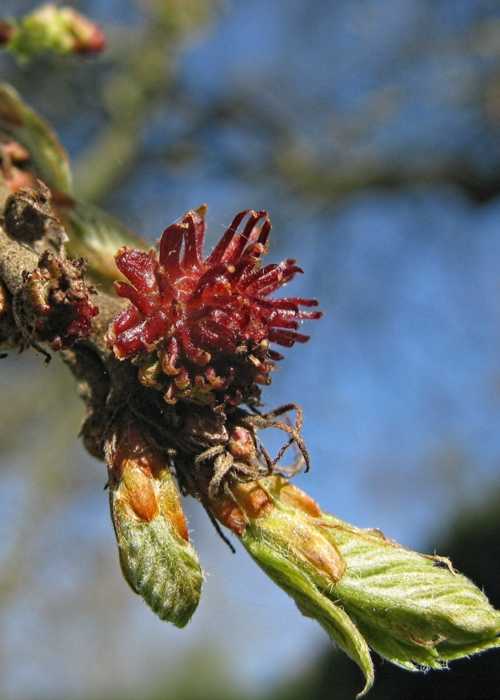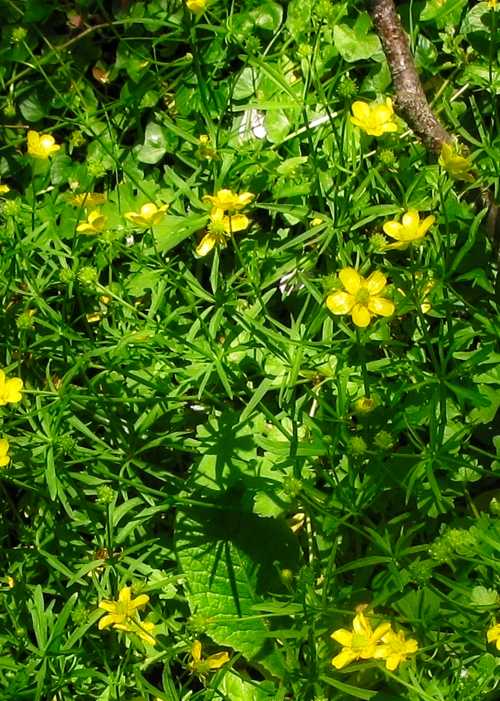Leader Rob Randall
The cemetery was first visited by the leader during one of the lock-down periods a couple of years ago and he had been a regular visitor ever since. The part of the cemetery nearest to the road has few graves visible because it suffered badly during the Bath blitz.

Pseudoneuroterus saliens gall © Rob Randall
German bombers targeting Stothert and Pitt’s engineering works missed by a few yards and hit a row of houses and the cemetery instead.
There are some fine specimen trees including a non-native oak, which has yet to be identified. Many of its female flowers had been taken over by a gall-wasp, Pseudoneuroterus saliens, which produces dark red growths rather like miniature sea-anemones. Under the trees Garden Bluebells and other bulbs are abundant. Native plants such as Primroses are accompanied by Polyanthus and one patch had examples of the hybrid between them. Polyanthus itself is already a hybrid which was developed by crossing Primroses and Cowslips.

Goldilocks Buttercup © Rob Randall
In many places, the flowers planted on the graves spread away and naturalise in the lawns. One of particular interest was the Goldilocks Buttercup which was in full flower and growing in large drifts. In this cemetery the flowers are mostly perfect but in many local populations not all the petals on the flowers develop. Rob suggested the name Goldilocks had been chosen for this plant not only because of the bright yellow flowers but because the basal leaves are three-lobed, suggesting the presence of three bears. In fact Goldilocks is often found in cemeteries, where it would have been planted long ago. The three-lobed leaves represented the trinity, and of course it flowers in spring soon after Easter.
The lawns are managed to encourage insects and there are numerous large ant-hills. Mining Bees were very busy and Alvan White photographed a colourful Nomad Bee, probably Nomada goodeniana or lathburiana. Before leaving, the party’s attention was drawn to a grave surrounded by fossil ammonites with a very large one as a headstone. With some careful online research after the meeting, Susan Feest was able to discover that it was the grave of John Williams and his wife Mary. He had been a train driver but also a keen amateur geologist.
Rob Randall

Recent Comments